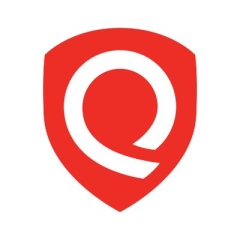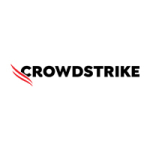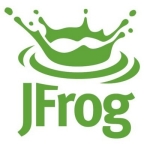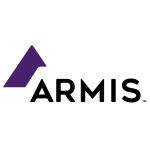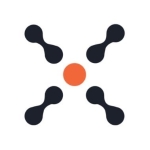Qualys CyberSecurity Asset Management serves multiple purposes. It provides comprehensive asset details, including serial numbers, UALs, UASs, and DTLSs, which are crucial for tracking updates and configurations. We can access detailed information like BIOS UI and installed software, enabling us to identify authorized, unauthorized, and missing applications. This comprehensive approach to asset management ensures that we have a clear understanding of our IT environment.
Qualys is a vulnerability management tool that utilizes agent scans to gather in-depth information about assets. This data includes details like installed software, their versions, and locations, which can be used for various purposes such as asset inventory, identifying end-of-life software, or tracking specific applications. By downloading this information in list format, Qualys helps address a range of asset management and security needs.
We use Qualys CyberSecurity Asset Management to manage our entire external attack surface. We've integrated our primary domain and all its subdomains into EASM, leveraging its full functionality. This integration allows us to gather crucial data. While we utilize existing features, we anticipate a new filter that will reduce noise from agent-based scans. This will help us identify vulnerabilities in any external-facing assets with public IPs and exposed ports. By pinpointing these vulnerabilities, we gain a clearer understanding of our infrastructure's security posture from an external perspective.
Some of the assets discovered by EASM include IP addresses, DNS lookups associated with those IPs, and the corresponding domain. EASM captures information based on the integrated ESAM profile. If an agent is already present, EASM merges the scan information with the agent data, and an ESAM symbol indicates this source. In addition to cloud-based assets, EASM also identifies on-premise assets with publicly exposed IPs.
Customers using Qualys CyberSecurity Asset Management for organizational purposes and formal reporting can submit requests to management, whether related to administrative or organizational perspectives. These requests are reviewed with consideration for their potential benefit to other Qualys customers. Therefore, any enhancements or requests made for our organization are also considered by the vendor providing the solution.
Qualys provides risk and threat intelligence monitoring with a built-in prioritization mechanism. This mechanism helps us prioritize exposed risk factors, such as vulnerabilities with varying levels of severity, low, ongoing, or emerging. The system monitors these vulnerabilities and allows for prioritized support. Additionally, the Qualys score increases based on the risk factor, ensuring that users are notified of critical vulnerabilities.
Qualys' TrueRisk scoring helps prioritize vulnerabilities in assets by considering multiple factors. These factors include asset criticality, which is determined by the asset's importance, e.g., critical server vs. UAT server and can be customized through tagging mechanisms. The scoring also incorporates Qualys' QDS code, vulnerability severity, and the presence of unpatched software. Additionally, factors like public IP exposure and the potential impact of even low-critical vulnerabilities are evaluated. By combining these elements, Qualys provides a comprehensive TrueRisk score that accurately reflects the overall risk posed by each asset.
Qualys Cybersecurity Asset Management utilizes deployed cloud agents as passive sensors, enabling real-time detection of network-connected assets. This functionality identified numerous devices sharing identical multicast or broadcast IP addresses and revealed asset details like hostname, IP address, MAC address, and operating system, contingent on protocol availability, e.g., DNS.
My favorite feature of Qualys CyberSecurity Asset Management is its ability to target missing software. Instead of applying the tool to all assets, we can tag specific groups of assets that require a certain application. This allows us to generate a QQL query to identify any assets missing from the software. By correlating this with QDS scores, we can accurately assess the risk level of high or low QDS scores associated with each asset and monitor them accordingly.
Qualys could improve by enhancing its dynamic tagging and role-based access control features, and by refining its user interface for a more intuitive and efficient user experience.
Qualys is currently not able to identify assets lacking DNS information. Collaboration with Qualys is underway to explore alternative protocols for hostname identification and enhance asset visibility.
I have been using Qualys CyberSecurity Asset Management for two years.
This platform demonstrates excellent stability with consistent 100 percent uptime and no glitches observed. Qualys CyberSecurity Asset Management is a reliable and stable choice.
I would rate the scalability of Qualys CyberSecurity Asset Management a nine point five out of ten.
We receive excellent technical support from Qualys, characterized by quick response times and the dedicated assistance of a Technical Account Manager who ensures the prompt resolution of critical issues.
The initial deployment of Qualys CyberSecurity Asset Management is straightforward.
I would rate Qualys CyberSecurity Asset Management ten out of ten.
We have Qualys Cybersecurity Asset Management deployed in multiple locations on various operating systems in a large scale environment.
I recommend Qualys Cybersecurity Asset Management due to its superior asset information collection capabilities, including comprehensive hardware and software inventorying. CSAM is continuously updated to encompass new technologies like GPUs and provides increased stability with reduced network noise. These ongoing enhancements make CSAM the optimal choice for effective asset management.
I suggest going for a full package that includes both external attack surface management and CyberSecurity Asset Management. The combination offers comprehensive protection and asset management.

